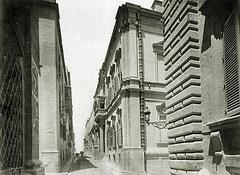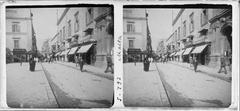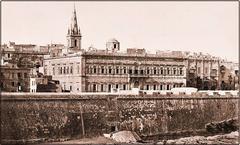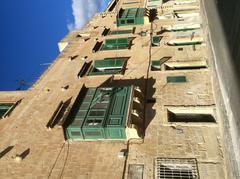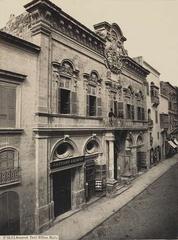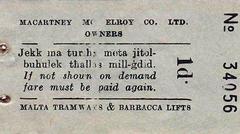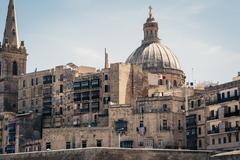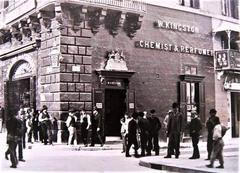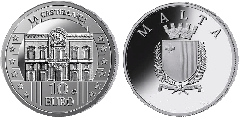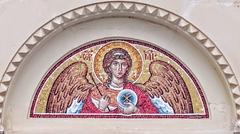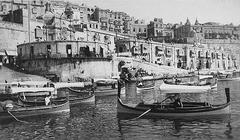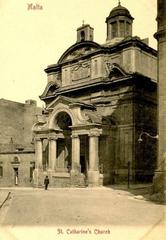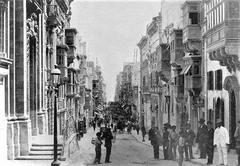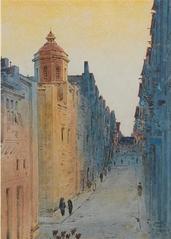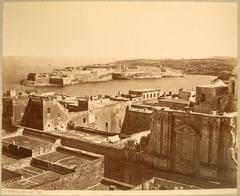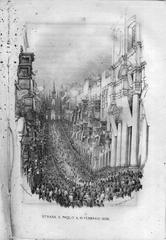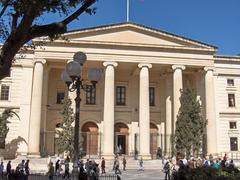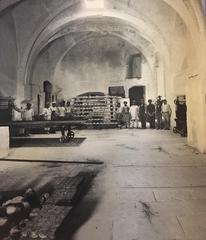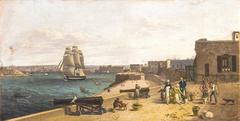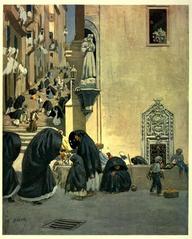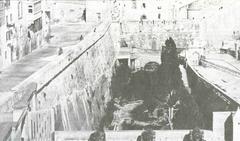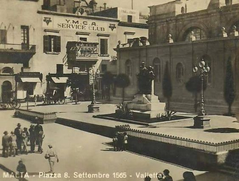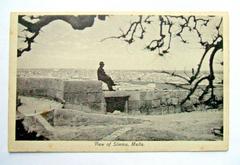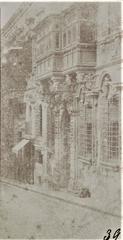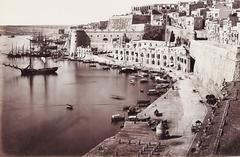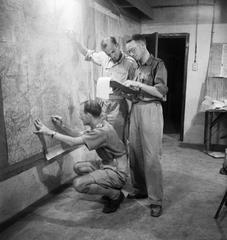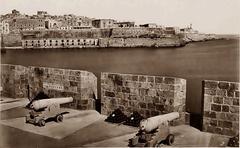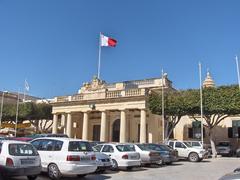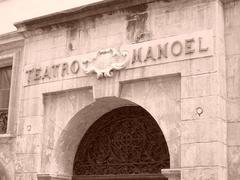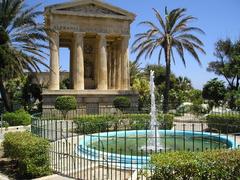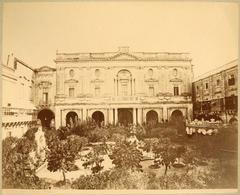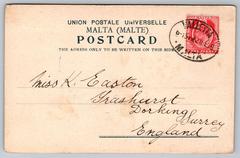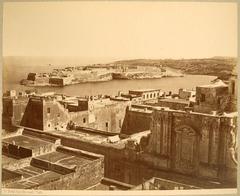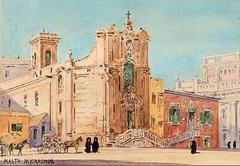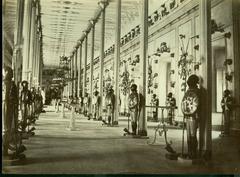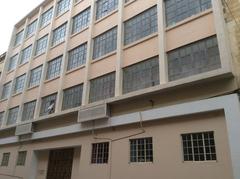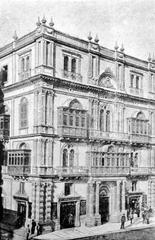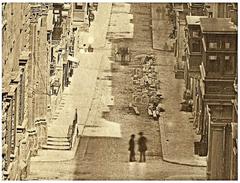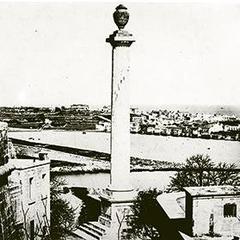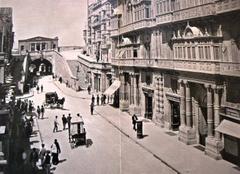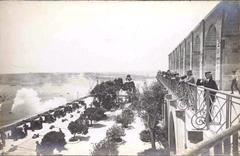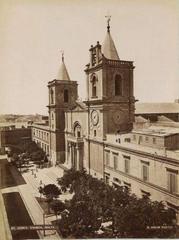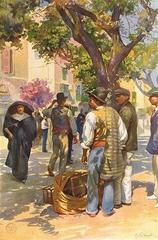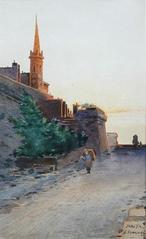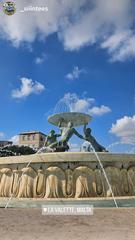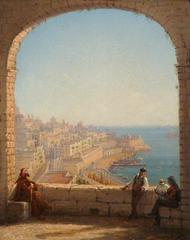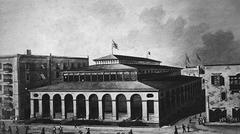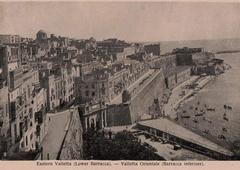
Triq Il-Merkanti: Visiting Hours, Tickets, and Historical Highlights in Valletta, Malta
Date: 04/07/2025
Introduction: The Significance of Triq Il-Merkanti in Valletta
Triq Il-Merkanti (Merchant Street) is a vibrant artery in the heart of Valletta, Malta’s UNESCO World Heritage capital. Established in the 16th century during the city’s founding by the Knights of St. John, this historic street has long been a commercial and social hub, connecting the Grand Harbour with Valletta’s core. Today, Triq Il-Merkanti enchants visitors with its Baroque architecture, traditional Maltese wooden balconies, lively markets, and a thriving street life that echoes centuries of history and European influence (Cilia La Corte, Guide Michelin).
This guide offers detailed insights into the street’s origins, architectural landmarks, cultural events, visiting hours, ticketing, accessibility, and practical travel tips—ensuring you make the most of your Valletta experience.
Historical Overview: Origins and Evolution
Triq Il-Merkanti, originally named Strada San Giacomo and later Strada Mercanti under British rule, reflects Valletta’s layered past. Its grid-like layout, planned by the Knights, was designed for both defense and commerce. Merchant Street developed as a key trading route, lined with shops, warehouses, and grand residences, thanks to its proximity to the Grand Harbour (Cilia La Corte).
Architectural Character and Notable Sites
Baroque and Maltese Features
Merchant Street is celebrated for its Baroque façades, limestone buildings, and painted wooden balconies (“gallariji”), which provide shade, privacy, and a splash of color to the urban fabric (Guide Michelin).
Key Landmarks
- Auberge d’Italie (MUŻA): A fine example of 16th-century Baroque, now home to Malta’s National Museum of Fine Arts, featuring impressive art collections (Les Deux Pieds Dehors).
- Mediterranean Conference Centre: Formerly the Sacra Infermeria, the main hospital of the Knights, now a venue for cultural events (Evendo).
- Is-Suq tal-Belt (Valletta Food Market): A beautifully restored 19th-century covered market offering Maltese and international cuisine (Trip101).
- Auberge de Provence (National Museum of Archaeology): Houses prehistoric artifacts and showcases Valletta’s Baroque grandeur (Official Valletta Map).
- Historic Churches: The Church of St. James and Jesuits’ Church are noted for their ornate interiors and cultural events (Buildings of Malta, AllEvents).
Urban Life: Commerce, Culture, and Social Hub
Triq Il-Merkanti remains the commercial soul of Valletta, featuring traditional shops, artisan boutiques, modern cafés, and restaurants. Regular markets and festivals enliven the street, while adaptive reuse of historic buildings (e.g., MUŻA) ensures the preservation of Valletta’s unique character (Les Deux Pieds Dehors).
Cultural Significance and UNESCO Heritage
Valletta, including Triq Il-Merkanti, is recognized as a UNESCO World Heritage Site for its outstanding Renaissance cityscape. The street’s continued vibrancy, preservation, and role as a living landmark highlight Malta’s cosmopolitan spirit (Two for the World).
Visiting Hours, Tickets, and Accessibility
General Access
Triq Il-Merkanti is a public street, open year-round and free to enter. Shops generally operate from 9:00 am to 7:00 pm, with some closing for a midday break. The street is accessible at all times, but visiting during early mornings or late afternoons is recommended for a quieter experience.
Attractions: Hours and Ticket Information
- MUŻA: Tuesday–Sunday, 10:00 am–5:00 pm. €10 adults; discounts available. (Les Deux Pieds Dehors)
- National Museum of Archaeology (Auberge de Provence): Daily, 9:00 am–5:00 pm. €10 adults; concessions available (Official Valletta Map).
- Mediterranean Conference Centre: Open daily; hours vary by event. Fees apply for concerts/exhibitions (Evendo).
- Is-Suq tal-Belt: Daily, 7:00 am–10:00 pm (Trip101).
- Casa Rocca Piccola: Monday–Saturday, 10:00 am–5:00 pm. €15 adults; guided tours recommended (Official Valletta Map).
Accessibility
Merchant Street is relatively flat and pedestrian-friendly, but some historic sites have steps or uneven paving. Wheelchair users should consult venue-specific access information.
Events, Festivals, and Markets
- Festa tan-Nawfraġju ta’ San Pawl (Feast of the Shipwreck of St. Paul): February 10th features processions, music, and cannon salutes (San Pawl Official).
- Notte Bianca: October’s all-night festival showcases art, music, and food along Triq Il-Merkanti (CarryOnChronicles).
- Artisan Fairs and Food Markets: Regularly held, featuring local crafts and produce.
Practical Tips for Visitors
- Footwear: Wear comfortable shoes for cobblestone streets.
- Photography: Best light is early morning or late afternoon; ask permission before photographing people during events.
- Payment: Credit cards are widely accepted, but small vendors may prefer cash.
- Dress Code: Modest attire is appreciated in churches and religious sites.
- Language: English and Maltese are official; most signage is bilingual.
- Safety: Valletta is very safe, but remain alert to petty theft during crowded events (XPLRVerse).
Frequently Asked Questions (FAQ)
Q: Is there an entrance fee for Triq Il-Merkanti?
A: No, the street is public and free to explore. Fees apply only for specific attractions.
Q: What are the best times to visit?
A: Early morning and late afternoon for fewer crowds and better photography.
Q: Is the street wheelchair accessible?
A: Main areas are accessible, but check individual historic sites for details.
Q: Are guided tours available?
A: Yes, many operators offer in-depth walking tours that include Triq Il-Merkanti.
Cultural Etiquette and Local Customs
- Greetings: A firm handshake and direct eye contact are customary.
- Tipping: 5–10% is appreciated in restaurants, though not obligatory.
- Religious Observance: Respect silence and dress codes in churches.
- Hospitality: Sharing food is a central aspect of Maltese culture.
Plan Your Visit
Arrive via Valletta’s main bus terminus or on foot from the city gates. Use the Audiala app for interactive maps, audio guides, and up-to-date information on events and ticketing. For more on Valletta’s highlights, see our related articles on Valletta Historical Sites.
Summary
Triq Il-Merkanti is more than a historic street—it embodies Valletta’s enduring heritage, architectural splendor, and dynamic street life. From grand Baroque palaces and bustling food markets to vibrant festivals, it offers a rich, immersive experience for every traveler. Plan ahead, embrace local customs, and let this iconic thoroughfare be the gateway to your Maltese adventure.
References
- Valletta Street Names – Cilia La Corte
- Valletta: On the Trail of the Knights – Guide Michelin
- What to Do in Valletta – Les Deux Pieds Dehors
- Valletta Food Market – Trip101
- Visit Malta – Official Tourism
- Mediterranean Conference Centre – Evendo
- Valletta Blog – Carm Mifsud Bonnici
- Valletta Map – Official PDF
- Things to Do in Valletta – CarryOnChronicles
- Valletta – Buildings of Malta
- Is Malta Safe for Travelers – XPLRVerse
- Malta Activities in July – Malta Info Guide
- Festa tan-Nawfraġju ta’ San Pawl – Official Site
- Magri’s Collection of Maltese Lore – AllEvents
- Valletta Malta – My Life Long Holiday



